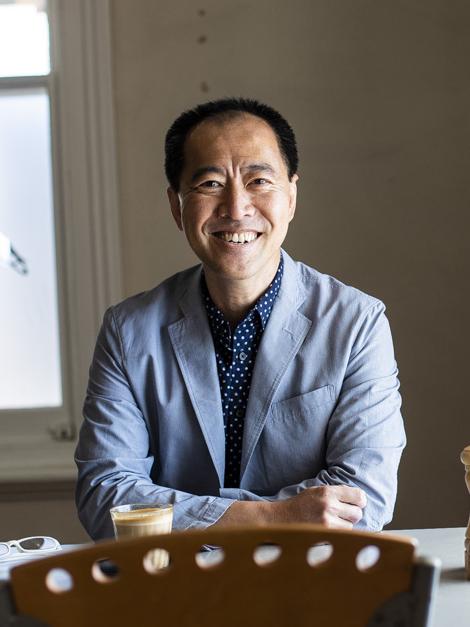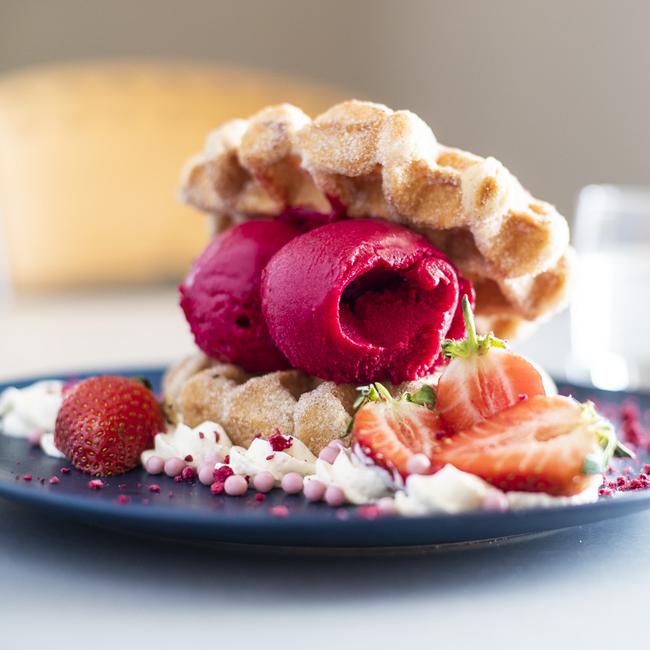Cafe Society: Taking Tassie’s tourism boom to the next level
There’s one massive problem at the heart of Tassie’s response to tourism, says a local expert.
Tasmania
Don't miss out on the headlines from Tasmania. Followed categories will be added to My News.
TOURISTS are easy whipping boys, but lay off them, says sociologist and anthropologist Can-Seng Ooi. Our pressure points are not their fault.
It is a failure of leadership in planning and communicating that is to blame, says the University of Tasmania’s Professor in Cultural and Heritage Tourism.

. “We need to be forward-thinking to ensure that infrastructure and capacity improve at the same rate as tourism numbers.”
We meet to talk about the future of tourism - and the new book he co-edited, Tourism in Tasmania - at the Signal Station cafe on Mt Nelson, which boasts a view sure to leave any tourist agog
Can-Seng believes most tourists who come to Tasmania – about 1.3 million annually – want to do the right thing. “If something is not good for the community, ‘tell us we shouldn’t do it or don’t allow us to go there’. It’s as simple as that.”
Instead, he says, innocent visitors are criticised for our housing shortages, hotspot overcrowding and everything else that gets in our way.

Attempting to disperse visitors regionally without upgrading roads, car parks, freshwater, sewerage systems and other public facilities accordingly will not work for tourists or locals.
“The next question is where the resources and funding for upgrades should come from,” says Can-Seng. “That is where the distribution of benefits comes in.”
He suggests serious exploration of options including an indirect tourist tax and enforceable undertakings by developers to give back to the local community in tangible ways.
“If there is a big tourism development, OK, you must also build 2000 toilets or whatever.”
Though Can-Seng volunteers this inflated number with a laugh, the former Copenhagen Business School professor is serious in calling for strategies to leverage the greatest community benefit from the state’s tourism economy.
He doesn’t mean just seasonal jobs for locals, even as the low season shrinks year on year. Benefits can come in various forms, including greater use of tourism resources for education.
If the state is to tackle sociocultural sustainability and a path of balanced tourism development, we need a master plan, trust in the system and a community-first ethos, he says.
“To support the local community without destroying the environment, it should not be a piecemeal strategy.”
He thinks he understands why flashpoints, such as the current one over a proposed helicopter-accessed standing camp at Lake Malbena in the Tasmanian Wilderness World Heritage Area, keep flaring.
“I would say we need to respect a grand master plan,” he says. “If we say [something] should not be touched, it should not be touched.
“If you want to sacrifice Malbena, you need to [first] ask how will it contribute to the whole community.”
Can-Seng does not think the broader community will see much benefit from many of the commercial enterprises into protected areas enabled by the Hodgman Government.
“Having a few wealthy tourists is not really helping the local community, it is helping the company,” he says.
He describes the oft-quoted “yield over volume” tourism strategy as extremely superficial and unsophisticated.
“For example, I do spend a lot of money on certain things,” says the Singaporean-born academic, who celebrates three years living in Tasmania this week.
“I like my wine and my cheese and I will pay a lot more for them, but I won’t pay more for other things.
“When we talk about high-yielding tourists, we need to ask ourselves what it is they want to pay a lot more for. Different cultures are spending in different ways. I don’t see that layered, nuanced discussion here. When I hear we are building for high-yielding tourists, I think which one are you talking about?”

an-Seng sees great potential in the business and events travel and tourism market in Tasmania.
“People want relevant, attractive destinations to do business and there is fantastic potential here.”
To order a free PDF copy of Tourism in Tasmania coedited by Can-Seng Ooi and Anne Hardy and released last week, or to find out more about a new UTAS Masters in Tourism, Environmental and Cultural Heritage launching next year, visit utas.edu.au/tourism. Hard copies of the book are available at local bookstores.
MORE CAFE SOCIETY:
AWARD-WINNING DESIGNER SCATHING ABOUT CBD REVAMP
ADAM MARTIN: TEACHING MEN TO LEARN FROM WOMEN
STEVEN BURGESS: MORE COMPACT CITY LIVING NEEDED
THE SIGNAL STATION
An extraordinary view south over the River Derwent is just one attraction at this landmark eatery on Mt Nelson. The scones, famous for their fluffiness and served with whipped cream and homemade raspberry jam, are another. The best-selling breakfast is the mega, $26, with eggs, bacon, chipolatas, mushrooms, tomatoes, spinach and hash browns.
Sweet treat: Belgian waffles with raspberry sorbet, fresh berries and whipped cream, $12.50.

Open: Daily, 9am-4.30pm. Address: 700 Nelson Rd, Mt Nelson.


